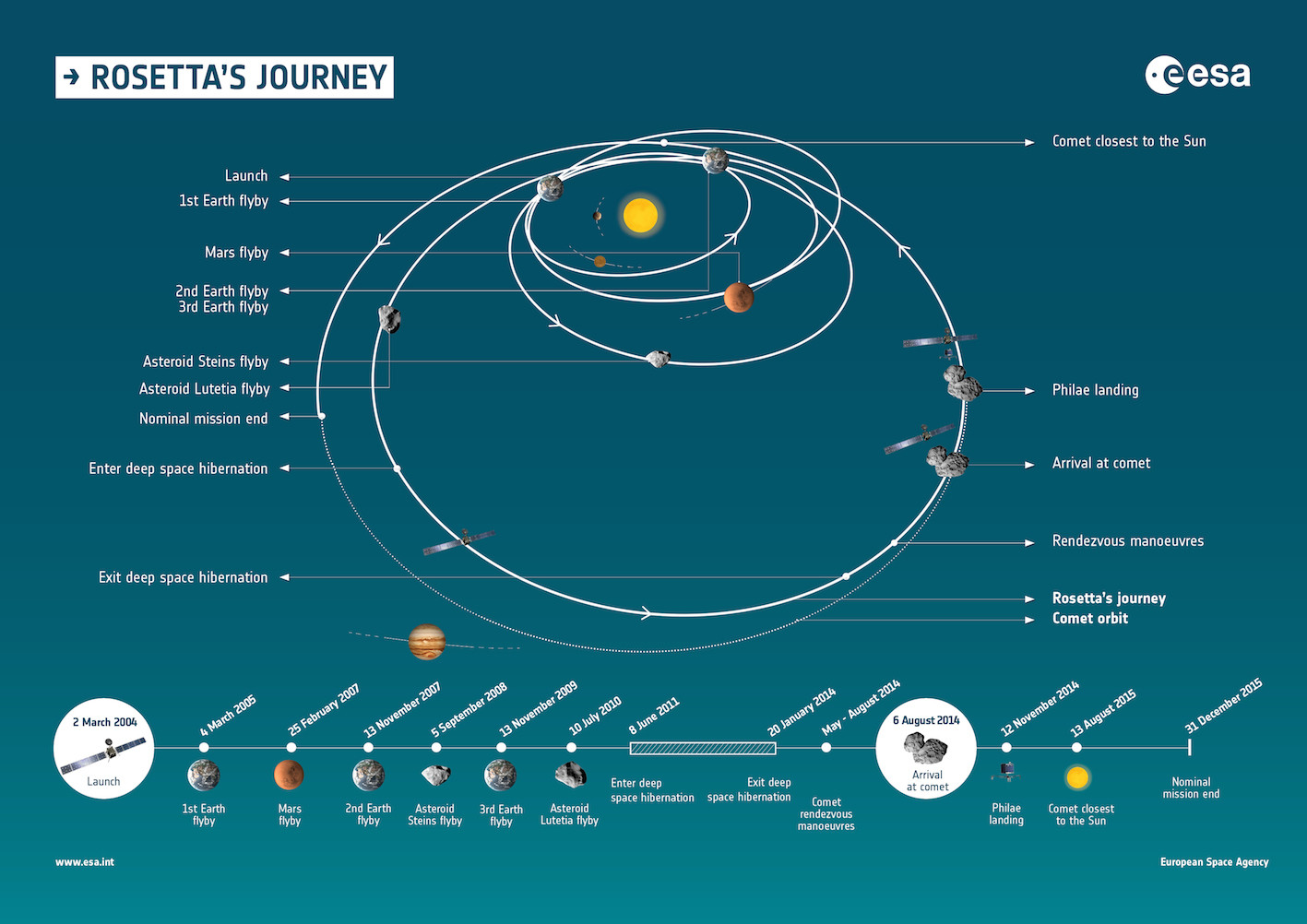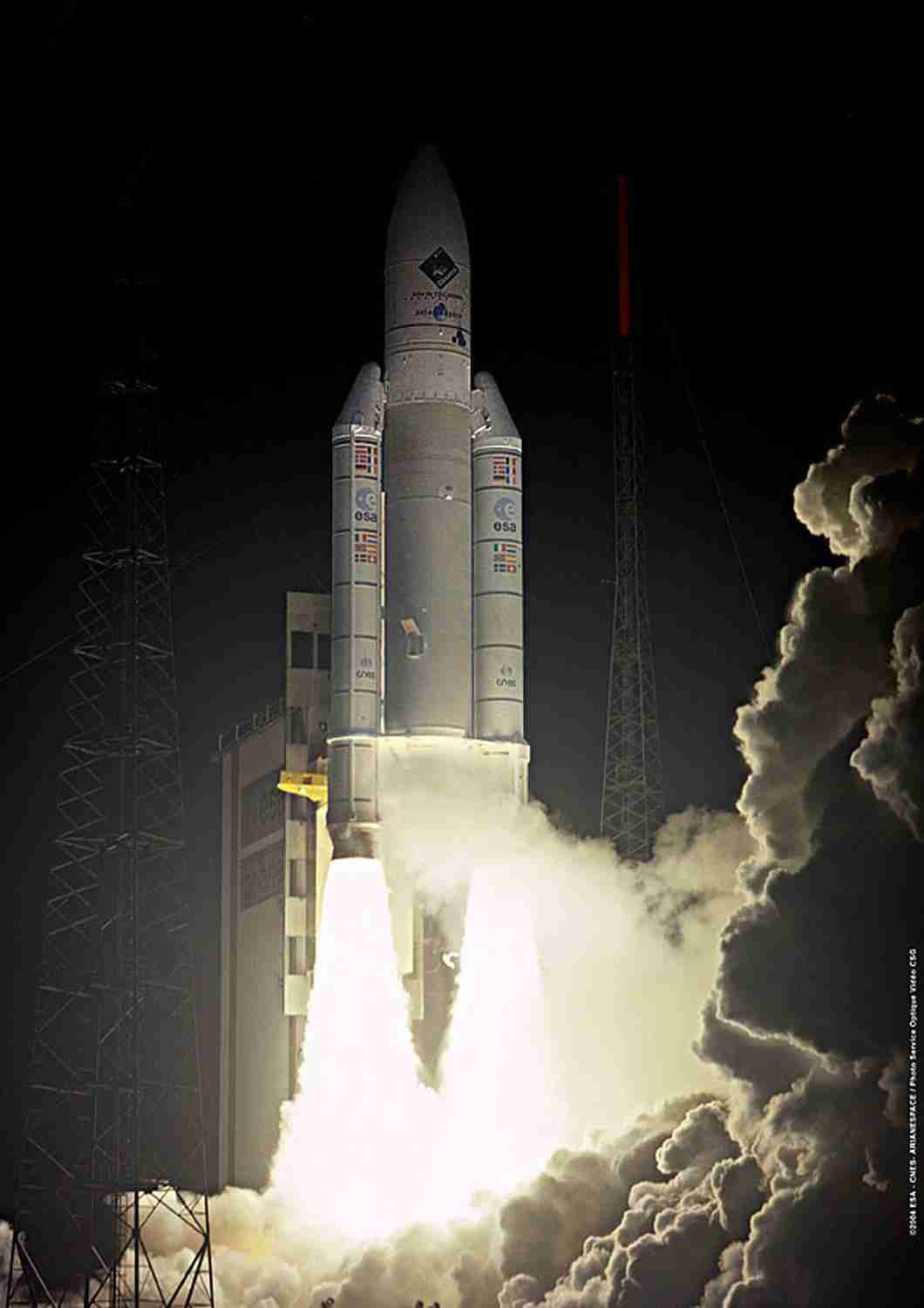Rosetta was successfully launched by an Ariane 5G+ on March 2, 2004. The trajectory of the probe was very complex, because it was not easy to reach and to accompany with little fuel a comet whose orbit was very different from that of Earth. This required several passages near planets that accelerated the probe and diverted its path. This is what experts call the gravitational assistance. After a first passage near the Earth, a Mars flyby and two flybys near the Earth, and consuming a ton of fuel, the probe finally reached the comet 10 years after the launch, a great success for celestial mechanics.
During its journey, Rosetta passed near two asteroids, Steins and Lutetia, of which beautiful images were obtained. Then the probe began to hibernate on June 8, 2011. Its awakening — a critical time — took place on January 20, 2014.

La trajectoire de Rosetta. La sonde a subi une première déviation (assistance gravitationnelle) par la Terre, puis une par Mars, puis encore deux autres par la Terre, afin de rejoindre la comète 67P et de l’accompagner sur sa trajectoire.
Crédit : ESAThe mass of the comet being relatively small, it was virtually impossible for Rosetta to orbit freely around it immediately. With the small jet engines it contained, it was made to maneuver in triangles around the nucleus. Only at a later stage was the probe close enough to the nucleus to orbit around it. Even then, its course had to be corrected frequently to send it away from the nucleus rapidly enough to prevent damage by the dust the comet ejected.
Crédit : ESA – C. Carreau


